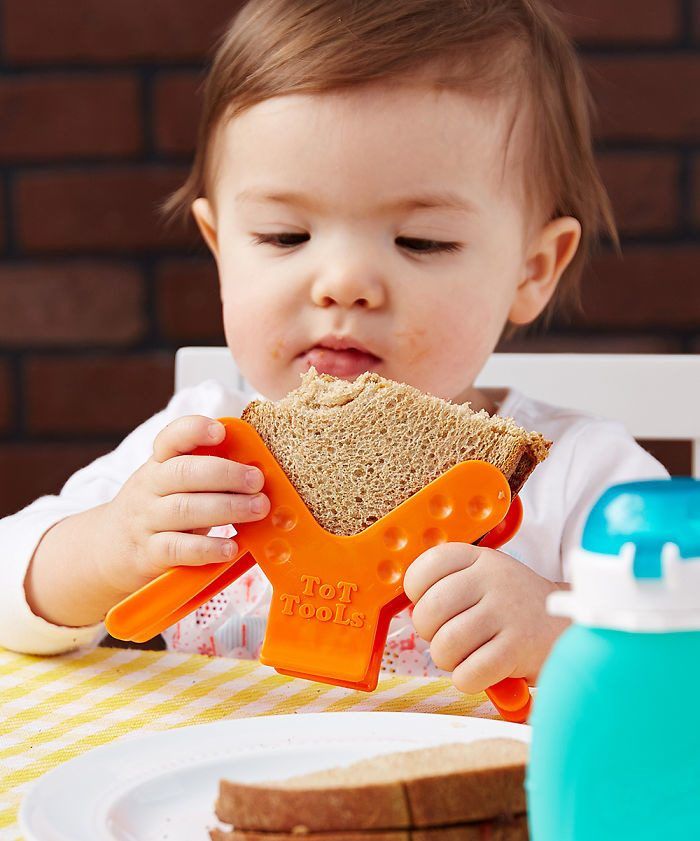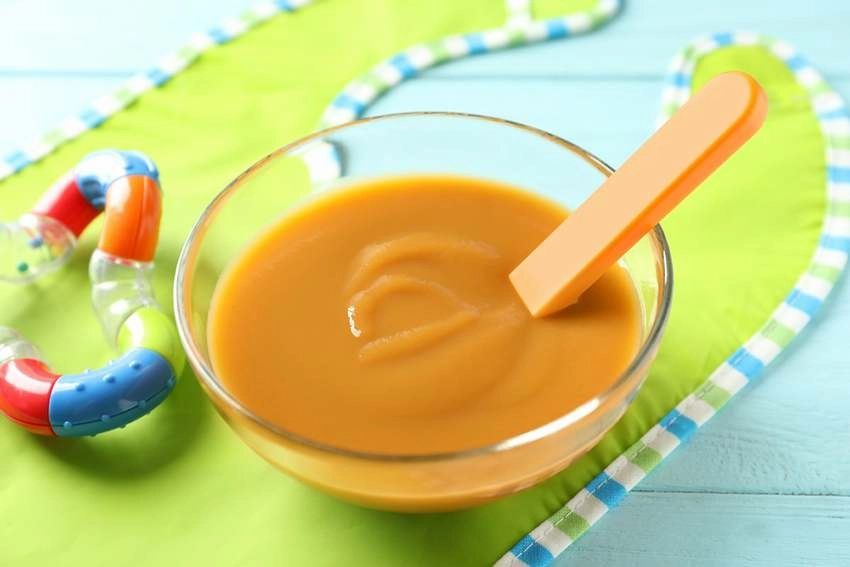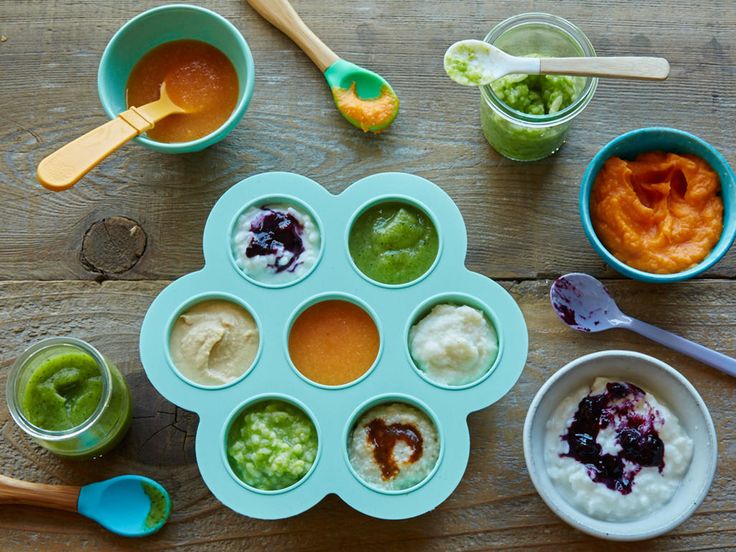Summer squash baby food
Zucchini and Summer Squash for Baby Food
Image: Shutterstock
The Goodness of Summer Squash for your Baby
Summer squash can be wonderful for baby and easy to turn into baby food recipes. While it contains less nutrients than do the Winter squash, it’s still a great vegetable for baby food.
Why are there less nutrients in summer squash varieties? There are less nutrients due to the fact that Summer squash are immature when they are harvested and eaten. Below you will find a nutritional summary accounting for all summer squash varieties below:
Summer/Zucchini Squash (1/2 cup boiled & drained with peel)| VITAMINS: Vitamin C – 5.5 mg Pantothenic Acid – .3 mg Niacin – .05 mg Riboflavin – .04 mg Thiamine – .04 mg Folate – 20 mcg Contains some other vitamins in small amounts. | MINERALS: Phosphorus – 48 mg Magnesium – 26 mg Calcium – 16 mg Sodium – 287 mg Iron – .42 mg Also contains small amounts of selenium, copper, manganese and other. |
When can I introduce Zucchini & Yellow Squash to my baby?
Many parents want to know when baby can eat zucchini and other yummy summer squashes. Summer squash is best given to baby around 8 months old as the skins may be difficult for a younger tummy to digest. There are many babies who may do just fine with this variety of squash however if your little one is prone to digestive upsets, then it might not be wise to introduce before 8 months old.
How to select and store Zucchini & Yellow Squash for baby food
Summer Squash are not known to be contaminated with high levels of pesticides so purchasing organic is your choice. Please do be sure to thoroughly wash these summer squashes if you will preparing them with the skin on.
The skin of summer squash is thin and delicate. This causes summer squash to be less hearty for storing. Handling summer squash with care is necessary so as not to bruise the squash. summer squash may be stored in the refrigerator, unwashed as water droplets may cause tiny spots of decomposition. Store your summer squash in the crisper box of the refrigerator.
Some varieties of summer squash are as follows however the Zucchini and Yellow are the best choices for baby’s first summer squash experience.
Zucchini: Some may know zucchini to be called Italian squash and in Europe, it may be know as a Courgette. Zucchini resembles a cucumber and is green as a cucumber is. It should be between six and eight inches for best taste. The meat of zucchini is whitish-yellow or may appear a pale green.
Yellow or Crooked Neck: This squash is yellow and may be a bit bumpy looking. It is shaped much like a bottle with a long, curved neck. The meat of the Yellow squash is much like that of the zucchini but contains more seeds.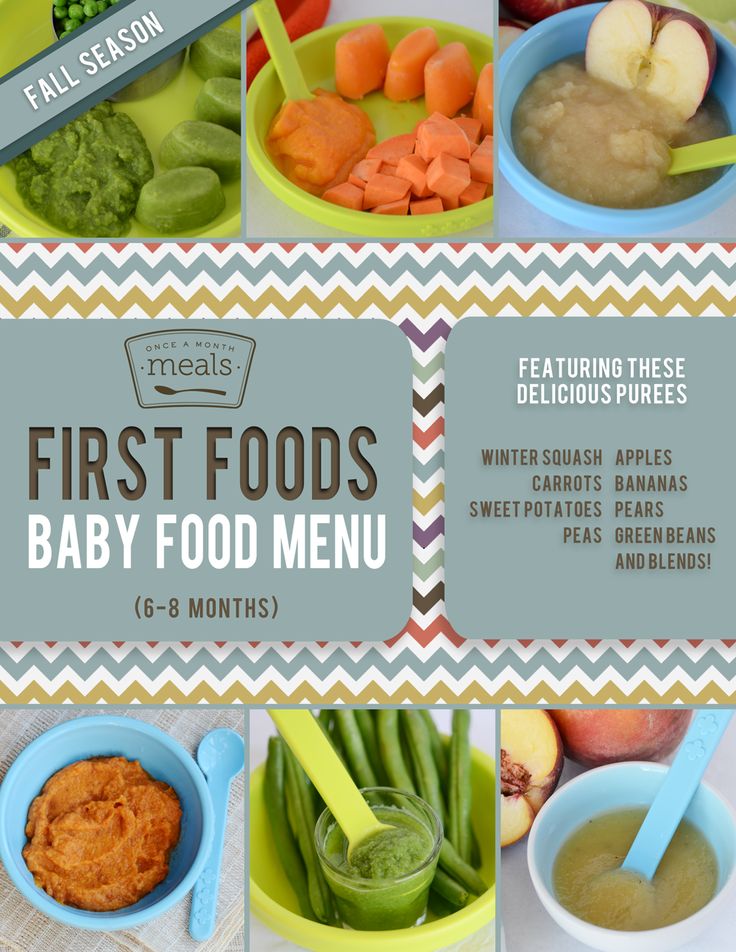
The best way to cook Zucchini & Yellow Squash Squash
You may steam or boil summer squash. Sauteing zucchini and yellow squash together in a wee bit of olive oil with spices is also quite yummy for baby.The best way to cook Zucchini & Yellow Squash Squash
The color of the Summer Squash will change when it is done cooking; it will appear more translucent and less colorful.
A Few Zucchini & Yellow Squash Squash Baby Food Recipes
Squash (summer) Puree – Basic
Step 1: Choose yellow squash or zucchini that are somewhat small in diameter, as these are the most tender.
Step 2: Wash squash thoroughly and cut into small slices or chunks. Do not remove skins. (*You may remove skins however an infant of 7-8 months old should be able to digest squash puree with skins on)
Step 3: Steam until tender then Place into your choice of appliance for pureeing and begin pureeing.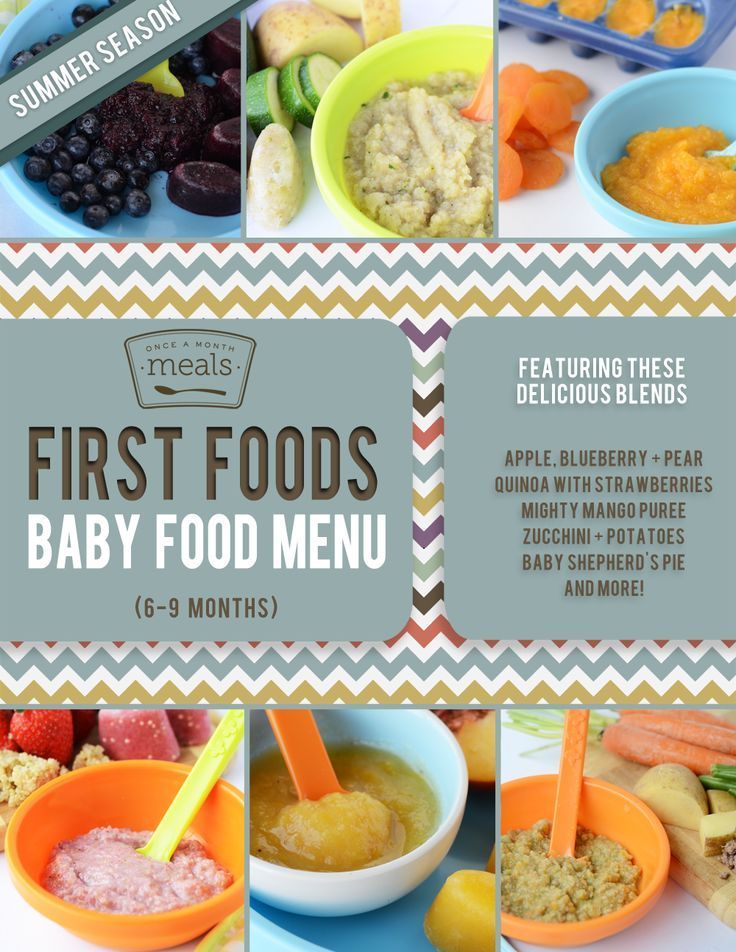
Step 4: Add water as necessary to achieve a smooth, thin consistency
**Summer squash becomes very watery when cooked; you will probably not need to add any water for your older baby.**
TIP: Baby food cubes (pictured) are a great way to store baby food when making in batches. Check out our page on making baby food cubes to learn more.
Yellow & Green Squash Medley
Step 1: Boil or steam or zucchini and yellow squash until tender
Step 2: Puree or mash as needed, adding water to thin if required.
**Summer squash becomes very watery when cooked; you will probably not need to add any water for your older baby.**
Summer Squash & Pasta Medley
(8 months + due to cheese & peppers which are optional)
Step 1: Boil or steam or zucchini and yellow squash until tender
Step 2: Prepare pasta such as Pastina or Ditalini according to package directions
Step 3: Add squash to the cooked pasta and drizzle with a bit of olive oil, sprinkle with grated cheese and/or basil and garlic powder
**Toss in some finely diced roasted red peppers for extra color and flavor temptation.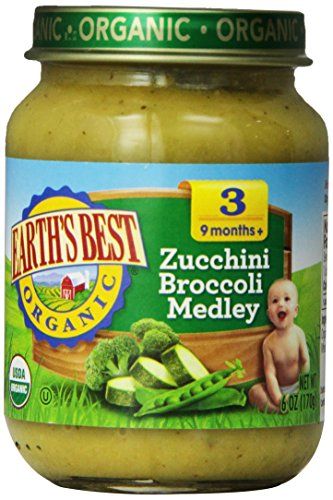 **
**
Zucchini & Carrot Fritters
Best for those 8 months of age and over. Exchange the cayenne with a bit of garlic powder if desired. Make a cucumber yogurt dip.
Ingredients:
- 1 medium carrot (peeled)
- 1 medium zucchini
- 1 small onion
- 1/3 cup ricotta cheese – *Skip ricotta and sub in 1/3 cup of milk if you prefer
- 1 egg
- 1/2 cup flour (whole wheat or all purpose)
- 1/4 teaspoon cayenne pepper
- olive or canola oil spray
Directions:
Step 1: Wash vegetables.
Step 2: Grate carrot and zucchini and chop the onion.
Step 3: Mix vegetables, ricotta cheese (or milk), egg, flour and pepper.
Step 4: Lightly spray non-stick fry pan with oil spray and warm pan on medium heat
Step 5: Place large spoonfuls in fry pan, flatten and cook for 7 minutes or until golden.
Step 6: Turn to other side and cook a further 7 minutes or until golden. Serve with cucumber yogurt dip
Step 7: Cut the fritters into pieces that your baby will be able to handle.
You could also bake these at 375 F, on a lightly olive oiled baking sheet for approx 20-25 minutes.
Turn half way through cooking and be sure to check on the progress often to avoid burning.
Foods Good to Mix With Summer Squash
- Carrots
- Eggplant
- Green Beans
- Peas
- Lentils
- Pasta
- Chicken
- Beef
- Pork
Remember, always consult with your pediatrician regarding introducing solid foods to your baby and specifically discuss any foods that may pose allergy risks for your baby.
Zucchini and Yellow Squash are tasty little veggies. They cook easily and make wonderful additions to your little one’s menu.
SHARE ON FACEBOOK SHARE ON PINTEREST
Roasted Yellow Squash Baby Food Puree (4+ Months)
Home » Feeding Style » Baby Food Purees » Stage One » Roasted Yellow Squash with Olive Oil + Cilantro Baby Food Puree
by Michele Olivier on July 9, 2014 (updated Jun 29, 2019)
Jump to Recipe
5 stars (3 ratings)
This fun and tasty Roasted Yellow Squash + Olive Oil with Cilantro Baby Food Puree will be a hit with your little one! Creamy, rich and full of flavor, it’s hard not to love this amazing puree.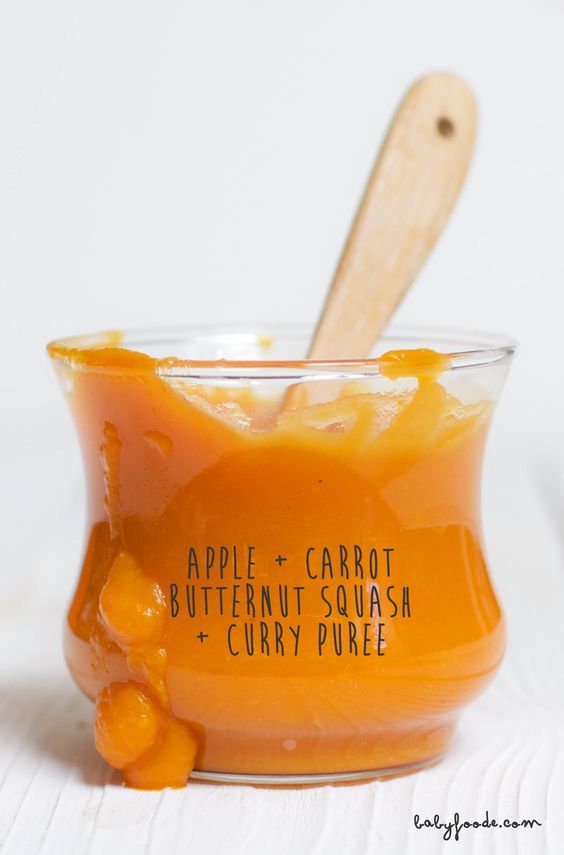 Great baby food for 4 months and up – stage 1 baby food.
Great baby food for 4 months and up – stage 1 baby food.
There is something so magically summer about yellow squash.
Maybe it’s their color.
Or maybe it is the way they can be plucked off the vine, still warm from the afternoon sun, mixed with a little olive oil then roasted and used as a side to almost anything you are making for dinner.
Or possibly, it’s the fact that when yellow squash are in season, they are in season! They are like the rabbits of the vegetable family. They just keep coming and coming.
In abundance.
With force.
In shear numbers that are on the edge of creating an army.
And just when you think you have had your fill, suddenly a whole new crop pops up and you have a million more to consume before they go bad.
This is where I step in, since I didn’t plant any this year, I am waiting for that time when all my friends and family, who had the time to plant them and lovenly grow them for me, are at their wits end trying to get rid of them. Then I politely take a couple bags off their hands and get to work. Pureeing, roasting, grilling. You can’t go wrong.
Then I politely take a couple bags off their hands and get to work. Pureeing, roasting, grilling. You can’t go wrong.
These simple, delicate and versatile little gems are easy to cook and filled with an abundance of Vitamin A, Potassium, Folate, Magnesium and Calcium. They are a perfect first food for your little one because of their smooth flavor and silky texture.
So if you are in the same boat as I am and didn’t think ahead to plant some, go ahead and make some new friends that have. They are going to need someone just like to you unload their armies of squash on in the next couple of weeks.
- Mix with Mango puree and tuna or salon puree for a caribbean inspired dish
- Puree with white beans, olive oil, paprika and tahini for a scrumptious toddler dip
- Whisk puree in with eggs, cheddar cheese, green onions, chopped spinach and leeks for an easy and healthy omelet
- Combine squash puree in with healthy whole wheat or gluten free pasta noodles, sprinkle with grated parmesan cheese and a dash of black pepper
- 7 Organic Starter Baby Purees for Under $20
- 15 Stage One Baby Purees (that actually taste delicious)
- 10 Super Starter Purees for Baby (Tips, Recipes and Starters Guide on How to Feed Baby)
- 5 Minute Mango Baby Food Puree
- Sweet Potato Baby Puree – 3 Delicious Ways
- 2 medium yellow squash cut into 1/2″ half moons
- 2 tsp olive oil extra virgin
- 1/4 tsp fresh cilantro finely chopped
- 1/4 cup liquid water, breast milk or stock
Heat oven to 400 Degree.
 Line baking sheet with parchment paper.
Line baking sheet with parchment paper.Place the cut squash onto the baking sheet and bursh with olive oil. Bake for 10 minutes, flip the squash and bake for another 10 minutes. Let cool slightly.
Place the squash and cilantro a blender or food processor and puree on high for 1-2 minutes, adding the liquid in if needed.
Age: 4 months and up
Yield: roughly 15 ounces
Additional Spices: Feel free to use the following spices instead of the curry – 1/2 tsp of cumin, 1/4 tsp of nutmeg, 1/2 tsp of cloves, 1 fresh garlic clove, 1/2 tsp of chopped fresh thyme, 3-4 basil leaves, 1/2 tsp chopped rosemary or even a big pinch of fresh ginger or 1/2 tsp ginger powder.
Storage: Fridge – store in an airtight container in the fridge for 3-4 days. Freezer – can be frozen for up to 4 months (this and this are my favorite freezer storage containers).
Favorite Kitchen Tools: Get a list of my favorite kitchen tools to make the best baby food here!
Did you make this recipe?
Tag @babyfoode on Instagram and hashtag it #babyfoode!
Pin Recipe Email a Friend
NEW TO MAKING PUREES? THEN CHECK OF MY GUIDE ON WHICH KITCHEN TOOLS YOU ACTUALLY ARE GOING TO NEED TO MAKE THE CREAMIEST AND SMOOTHEST BABY PUREES. HINT, IT’S NOT MANY!
Zucchini puree for the first feeding
The introduction of zucchini in the first feeding is recommended by WHO, and zucchini puree for feeding the baby can be prepared without any problems yourself. There is nothing complicated in growing zucchini and the mature fruits of many varieties can be stored throughout the entire frosty period. The pulp of the fruit with elementary heat treatment retains its beneficial properties and is easily absorbed by the child's body even from an early age.
Contents
- How to cook courgettes for the first feeding
- Courgettes for complementary foods in baby food
- Composition of marrow
- Benefits of zucchini for children and adults
How to prepare zucchini for first feeding
If you decide to start feeding your baby, start with zucchini. It will be the best addition to breast milk or adapted formula. Zucchini is a hypoallergenic product and contains a large amount of nutrients needed by the child.
Zucchini puree recipe
Cooking zucchini puree for the first feeding at home. Of the ingredients you need only zucchini and water. Let's start by rinsing the zucchini under cool running water. Peel off the skin and cut into cubes. Next 2 options. Either put it in boiling water, cook the zucchini for 6-10 minutes, while retaining the benefits of vitamin C. Or steam it, which will undoubtedly be tastier and healthier. Then we wipe through a sieve or grind with a blender.
You need to start complementary foods with one teaspoon, gradually day after day, increasing the number of spoons. It is important to introduce your child to this product at a very young age. When the child grows up, he will also need nutrients. And you can spoil him with many different zucchini dishes.
How to cook zucchini correctly and how much
For the first feeding, it is recommended to boil zucchini for up to 10 minutes. Usually this time is enough to soften the cut pieces. Do not forget that the longer the heat treatment of the vegetable takes place, the less vitamins and useful trace elements remain. Then everything is thoroughly crushed into puree and the first complementary foods are ready. Depending on the period of introduction of the puree to the baby, you can add a little vegetable oil to the puree if the mass of the portion of the puree has reached 100 g (usually on the 6th-7th day of feeding).
For the preparation of mashed potatoes, babies need to select only young and fresh zucchini fruits: without rot, cracks and dents.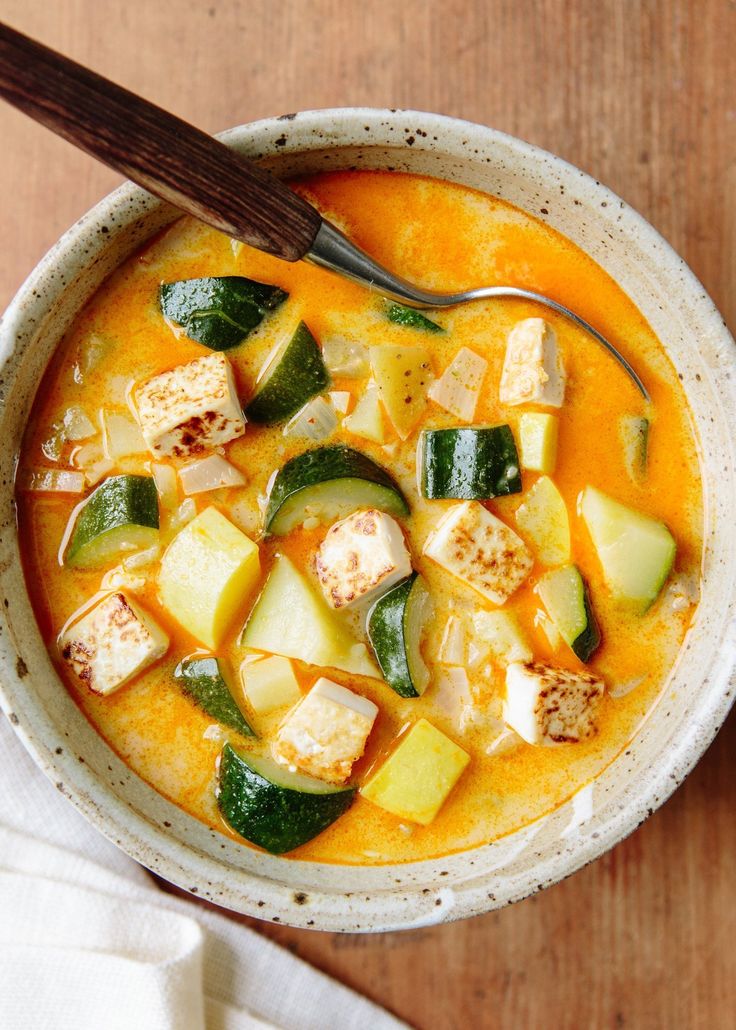 The fruit is thoroughly washed under running water. Then its lateral parts are cut off: the tail and the “butt”; peel is removed. The zucchini is cut lengthwise into several parts, from which the central soft part with seeds is removed. The remaining parts are cut into cubes. If the vegetable is bought at the market or in a store, it is recommended to soak the zucchini in clean water for about 2 hours to remove unnatural trace elements from the fruit in the form of fertilizers and pesticides.
The fruit is thoroughly washed under running water. Then its lateral parts are cut off: the tail and the “butt”; peel is removed. The zucchini is cut lengthwise into several parts, from which the central soft part with seeds is removed. The remaining parts are cut into cubes. If the vegetable is bought at the market or in a store, it is recommended to soak the zucchini in clean water for about 2 hours to remove unnatural trace elements from the fruit in the form of fertilizers and pesticides.
How to freeze and defrost zucchini? Cooked cut fruit cubes in the right amount are placed in plastic bags or containers, and then in the refrigerator. For the preparation of frozen fruit puree, it is recommended to use a defrosted vegetable. To speed up the process, bags or containers with zucchini are placed in water at room temperature or under running tap water. After 1-2 hours, you can start cooking according to a known scheme.
Squash for complementary foods in baby food
Squash is widely used in baby food for its unique properties. In addition, vegetable squash purees are considered the most popular when introducing the first complementary foods to a child. One-component zucchini puree manufacturers recommend using for children from 4 months.
In addition, vegetable squash purees are considered the most popular when introducing the first complementary foods to a child. One-component zucchini puree manufacturers recommend using for children from 4 months.
Table of the introduction of the first complementary foods with zucchini according to WHO recommendations
Baby food recommended for the first complementary foods includes Heinz zucchini puree, which additionally includes corn flour and water. A similar product is Hipp zucchini puree, which contains coarse rice flour. These products are sold in glass jars with a net weight of 80 grams, and the puree contains no salt, sugar, starch, preservatives or dyes.
At a later age, in baby food, zucchini is used with vegetables, fruits, cereals and meat. For children over 5 months:
- Frutonyanya Broccoli and Zucchini Puree
- Puree Frutonyan zucchini and potatoes
- Frutonyanya puree cauliflower and marrow
- Puree Frutonyanya apples and zucchini
- Frutonyanya zucchini-oatmeal puree
- Gerber potato and courgette puree
- Puree Gerber apples and zucchini
Children's puree Tyoma beef with zucchini is recommended to try not earlier than 6 months from birth.
Ingredients of zucchini
Zucchini is a source of substances that have a beneficial effect on digestion. They contain a small amount of calories when cooked (20 to 25 kcal per 100 grams), so you can use them in food during therapeutic diets.
Fruits contain not only carbohydrates, fats and proteins, but also useful trace elements: sodium, iron, magnesium, zinc, iodine. In addition, the composition contains vitamins of groups B, C, E, H, PP, A.
Benefits of zucchini for children and adults
Zucchini has a very pleasant taste. Doctors advise them to use those who have undergone surgery on the stomach or intestines. I would like to mention that these fruits are very useful for those who suffer from edema.
Zucchini juice for men and women can help with obesity. Helps the body to get rid of toxins and slags, relieves constipation well, strengthens the heart. The glycogen in them has a positive effect on the activity of the liver. Zucchini significantly improves blood formation, helps to restore strength after prolonged exertion. Zucchini seeds will help get rid of worms. With hepatitis, regular consumption of zucchini will lead to a significant improvement in well-being.
Thus, the use of zucchini in the first feeding is the best option for both the child and the parents (of course, excluding the case of his individual intolerance).
composition, useful properties, preparation of zucchini puree
Zucchini puree is the first product that is introduced as complementary foods to a child. Considered one of the first safest hypoallergenic products.
It is a delicate mixture of crushed marrow pulp. It can be made with the addition of salt, sugar and spices, for baby food it is more often used in its natural form without additives.
Do you know what? Zucchini puree does not irritate the intestines, it is quickly digested, since it does not contain hard fibers, a small amount of fiber.
Pediatricians strongly recommend starting complementary foods with zucchini puree because of the dietary qualities of this vegetable.
Interesting! Zucchini puree takes an honorable first place in the list of the most popular products that young mothers trust.
Ingredients
Normally, homemade squash puree contains only zucchini and water.
The composition of the industrial puree may include ingredients that are not at all related to this product:
- food additives;
- stabilizers;
- thickeners;
- acidity regulators.
Interesting! Zucchini puree contains a large amount of useful substances that are necessary for a small growing organism.
Preparation
Zucchini puree can also be prepared independently, no special skills are required in this matter.
Interesting! Zucchini does not lose its beneficial vitamin properties when steamed or frozen.
How to prepare zucchini puree in water:
- Wash the zucchini.
- Remove skin and seeds.
- Cut into small cubes.
- Soak in cold water for 30 min.
- Cook until completely softened in a small amount of water for 20 minutes.
- Cool, grind with improvised means (sieve, blender, fork).
Before the baby tastes the puree, it must be warmed up to +40°C.
Do you know what? Steaming zucchini instead of water only takes 10 minutes.
Cooking a vegetable in the oven:
- Wash the courgette.
- Remove skin and seeds.
- Cut into small cubes.
- Place on foil and wrap contents.
If the puree is thick, you can dilute it with milk, infant formula or vegetable oil.
Interesting! A child at the beginning of his life does not distinguish taste, so the dish may not be sweet or salty, and he eats it perfectly.
Useful properties
Zucchini puree has a rich vitamin and mineral composition:
- vitamin A;
- choline;
- vitamin PP;
- vitamin B9;
- chlorine;
- vitamin B6;
- potassium;
- phosphorus;
- magnesium;
- vitamin B2;
- vitamin C;
- iron;
- vitamin B1;
- calcium;
- vitamin E;
- sodium.
Do you know what? Most of the vegetable is water, it is 93%. Proteins only - 0.5%. Carbohydrates - 5-6%. And fats practically do not reach 0.1%.
Benefits:
- stimulates the secretion of digestive enzymes;
- improves the nervous system;
- develops the processes of hematopoiesis;
- normalizes intestinal motility;
- eliminates predisposition to constipation;
- promotes the growth of beneficial microflora that prevents the development of dysbacteriosis.
How to choose
Interesting! The first complementary foods are introduced to the child depending on what kind of feeding he is on, if breastfeeding, then not earlier than 6 months, if artificial, then you can start giving as early as 4.5 months.
The World Health Organization recommends feeding canned squash puree as manufacturers select organic, growing conditions tested squash that are suitable for children's food.

